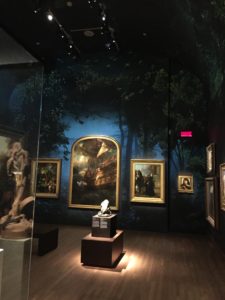
What a downer! It has been a while since the 2019 Scholarly Communications Symposium at UNC Greensboro (April 15, 2019), which focused on the long-term sustainability and preservation of digital forms of scholarly communication. The most striking memory of the day was the opening talk by David Eltis (emeritus, Emory University), who shared his story of long dedication to documenting and mapping twenty thousand slave voyages, first on punch cards, then a CD-ROM, and next a succession of online platforms over decades. Despite millions of dollars of grant funding, millions of online users, and notable historical and educational breakthroughs, he described his work on the Slave Voyages website as “a tale of woe,” and not in the obvious way one would expect from its horrifying historical content. Apologetically but dutifully, he took the role of a prophet of doom.
The bad news is that no one has found a long-term solution yet. If you want to keep your online scholarly project alive, open, and accessible to students and other nonspecialist users, Eltis told us, you will need to re-develop it every five years because of changes in infrastructure, software, and usability expectations. You will need one grant after another, always having to make the case that you are adding something new and innovative worthy of a new round of funding; funders will not pay simply to maintain a site. After all that effort, you might find, like Eltis, that the book you published based on your digital work is your most archivable production, the only part of your work likely to be preserved for future generations.
And the good news is . . . what? Eltis offered a “glimmer of hope” in a new collaborative funding model that he is piloting. As a former publisher, I found it hopeful that the authors of digital resources like Eltis would recognize, based on experience, that publishing is time consuming and expensive, with digital publishing topping the list; sometimes customers and users are so (understandably) upset about pricing that they forget why publishers charge for online resources at all. For open access resources like the Slave Voyages site, it’s important for funding models to support ongoing maintenance, including technology and labor.
Supporting that point were Liz Milewicz (Duke University), who talked about recognizing graduate student labor on digital projects, and Lee Vinsel (Virginia Tech), co-author, with Andrew Russell (SUNY Polytechnic), of “Hail the Maintainers,” who works to bring attention and respect to the important work of maintenance, whether of plumbing, telecom cables, or websites. Can’t we value and respect the work of the people who keep things running? Allen Tullos shared with us that the respected Emory Center for Digital Scholarship, where the multimedia journal Southern Spaces is published, along with more than 100 other digital projects over the years, has 14 full-time staff members. How impressive, and—for most other digital projects and centers–how daunting!
Once we can accept that digital publication of all sorts costs time and money on an ongoing basis, then we can move on to find models not only to build projects but also to keep them running and preserve them. Streamlining publishing workflows by sharing resources among university presses is one solution that was outlined by John Sherer (UNC Press); the importance of sharing information and resources across institutions and in public-private partnerships was a theme emphasized by several speakers. Scholars planning digital projects should not be afraid of standardized technology; unique content is what’s important, and it needs stable infrastructure.
Establishing technical standards to avoid “the horrors of complete recoding” experienced by Eltis would be the ideal. Unfortunately, as Sayeed Choudhury (Johns Hopkins) pointed out, systems for digital scholarship have not yet cohered into a comprehensive infrastructure. Nevertheless, it is important to seek out the piecemeal solutions that are out there, rather than reinvent the wheel. There will always be exciting digital experiments to inspire us, but hurrah for funders who recognize that not every project has to be a hacking, a disruption, or a revolution to be worthy of support. Projects that clarify workflows and find ways to tie existing solutions together in sensible, practical ways might be less exciting but more fundamentally important for the long term.
I felt that we owed Dr. Eltis a debt of gratitude for his honesty in setting the tone for the day. In the end, I exited the symposium not elated, exactly, but impressed by the honesty and straight-talking. It was a downer, but in a good way. Digital publishing is hard, and that sobering knowledge in itself offers a glimmer of hope. Facing the enormity of the challenge squarely is what will, eventually, lead us to do online publishing the right way–to make digital scholarly content accessible to all, for the ages.


